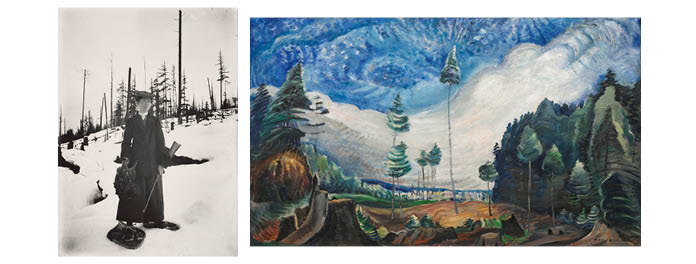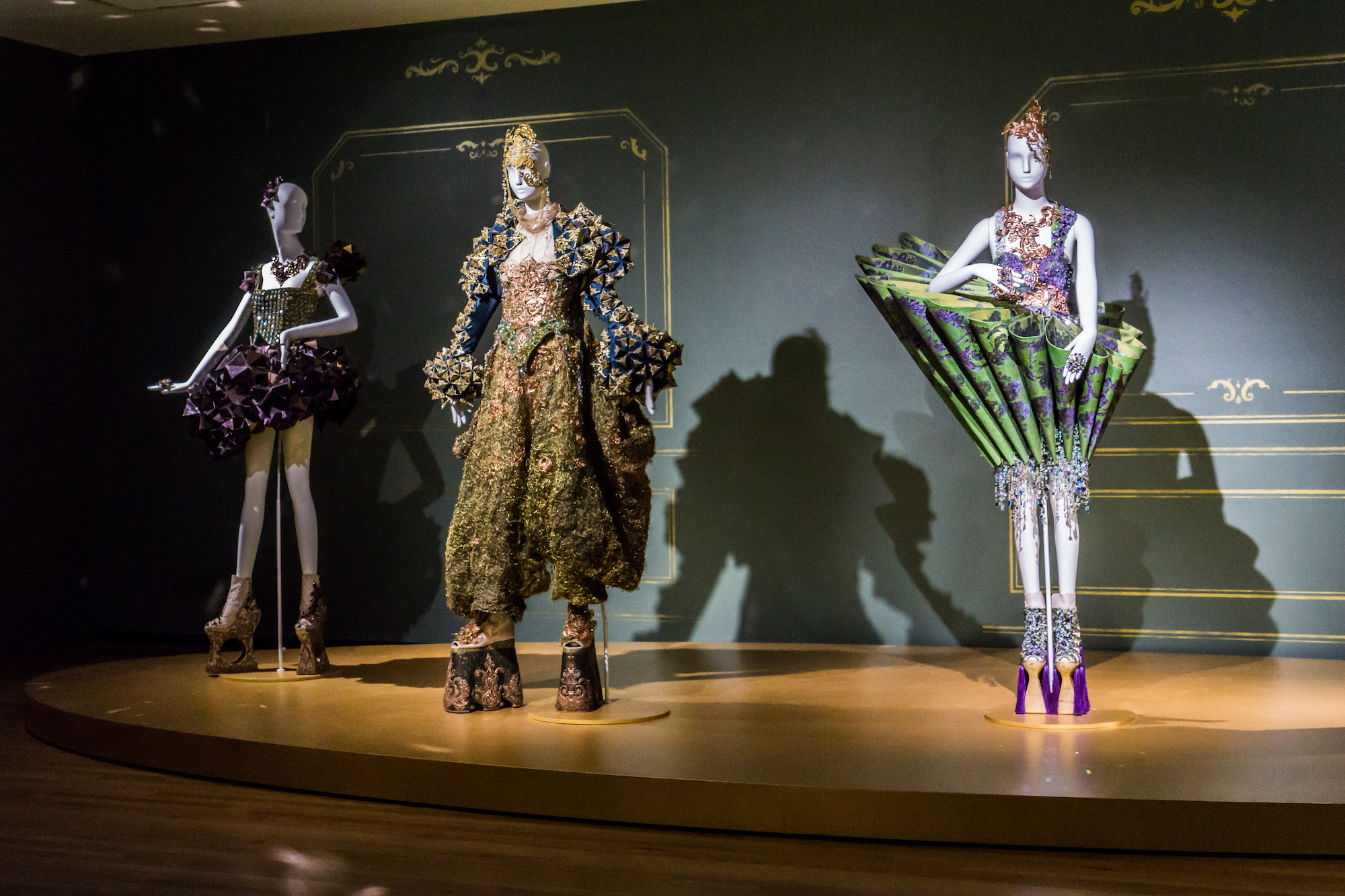BC’s 20th Century Landscape Examined Through Paintings and Photographs by Prolific Artists
The Vancouver Art Gallery announces a new exhibition uniting the works of two women artists practicing in British Columbia in the early twentieth century in Emily Carr in Dialogue with Mattie Gunterman, on view at the Gallery from April 28 to September 3, 2018. Home to the world’s finest collection of Emily Carr works, the Gallery pairs a selection of paintings by Emily Carr (1871–1945) from its permanent collection with forty-eight photographs by US-born photographer Mattie Gunterman (1872–1945). Gunterman’s photos are on loan from the private collection of Vancouver photographer and writer Henri Robideau.
The exhibition is reflective of Emily Carr’s great affection for BC’s landscape, a place she regarded as a site of artistic and spiritual inquiry. While others perceived the forests of this region as untamed and impenetrable, Carr saw the vitality of the natural world, and seized the opportunity to present her personal vision of the coastal rainforest.
Mattie Gunterman came to settle in the BC community of Thomson’s Landing (later Beaton) in 1898 after a 600 mile trek from Seattle, Washington. Like Carr, Gunterman’s oeuvre reflects her deep engagement with the wilderness around her, which she documented through the lens of her medium format glass plate camera. Family, friends, trappers, prospectors, miners, and Gunterman herself are among the subjects featured, providing a fascinating look into her daily life.
“By presenting the works of these two prolific female artists in tandem, we offer unique insight into twentieth century British Columbia,” says Kathleen S. Bartels, Director of the Vancouver Art Gallery. “Gunterman’s photographic works in particular are not only an important resource for those interested in early pioneer life, but are compelling artistically for their direct and expressive nature, which was in sharp contrast to much of the pictorialist, atmospheric photography that dominated the period. Her methods innovatively anticipate much of the contemporary photography techniques of today.”
Emily Carr in Dialogue with Mattie Gunterman is organized by the Vancouver Art Gallery and is curated by Ian M. Thom, Senior Curator, Historical.
About Emily Carr
Born in Victoria, British Columbia, Emily Carr (1871–1945) is one of the most significant Canadian artists of her generation. This West Coast modernist is widely recognized for her iconic paintings depicting the forested landscape of British Columbia and First Nations communities that she visited on her sketching trips in 1908, 1909, 1912 and 1928. Carr’s first important body of work was executed in 1912 when, using the new sense of colour and paint handling she developed in France in 1911, she turned her attention to the totemic art of the First Nations of British Columbia. This work was not well received when it was first exhibited in 1913 and for many of the years that followed she rarely painted. In 1927, she was included in the Exhibition of Canadian West Coast Art: Native and Modern at the National Gallery of Canada, where her work was widely praised. Encouraged by fellow artists, notably Lawren Harris, Carr returned to painting and continued to paint actively until 1942, when ill health curtailed her practice. In later life, she devoted more time to writing; her first book Klee Wick won the Governor General’s Award for Literature in 1941.
About Mattie Gunterman
Mattie Gunterman (1872-1945) was born Ida Madeline Warner in La Crosse, Wisconsin. She became interested in photography early in life and learned about the photographic process from an uncle who had a commercial photography studio in La Crosse. Gunterman left home in the late 1880s and travelled west to Seattle, Washington, where she met Bill Gunterman whom she married in 1891. After a trek of more than 600 miles which she documented with images of friends, campsites, trappers, prospectors, miners and the wilderness around her, they eventually settled in Thomson’s Landing (later Beaton), British Columbia, in 1898. Around that time, Gunterman purchased a medium format glass and with that she continued to keep a photographic journal of her life including images featuring the spoils of hunting trips, skaters on frozen ponds, family gatherings and masquerade parties.
*Also opening this spring at the Vancouver Art Gallery:
Offsite: Shigeru Ban (May 11 – October 8, 2018)
Cabin Fever (June 9 – September 30, 2018)
David Milne: Modern Painting (June 16 – September 16, 2018)
Site Unseen (June 16 – September 16, 2018)

About the Vancouver Art Gallery
Founded in 1931, the Vancouver Art Gallery is recognized as one of North America’s most respected and innovative visual arts institutions. The Gallery’s ground-breaking exhibitions, extensive public programs, and emphasis on advancing scholarship all focus on historical and contemporary art from British Columbia and around the world. Special attention is paid to the accomplishments of Indigenous artists, as well as to the arts of the Asia Pacific region—through the Institute of Asian Art that the Gallery founded in 2014. The Gallery’s programs also explore the impacts of images in the larger sphere of visual culture, design and architecture. vanartgallery.bc.ca
The Vancouver Art Gallery is a not-for-profit organization supported by its members, individual donors, corporate funders, foundations, the City of Vancouver, the Province of British Columbia through the BC Arts Council, and the Canada Council for the Arts.



